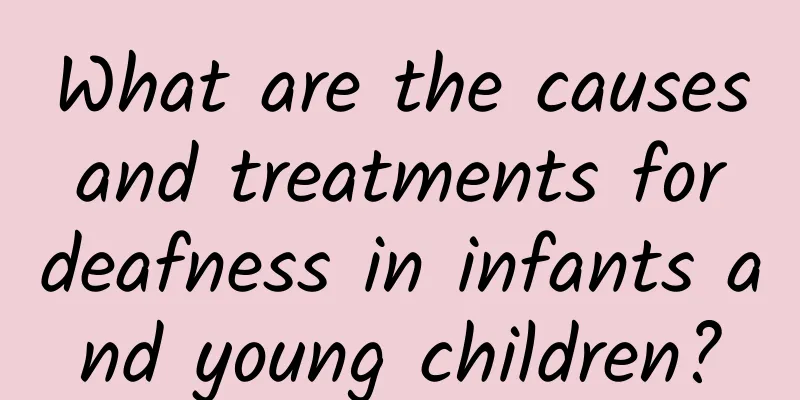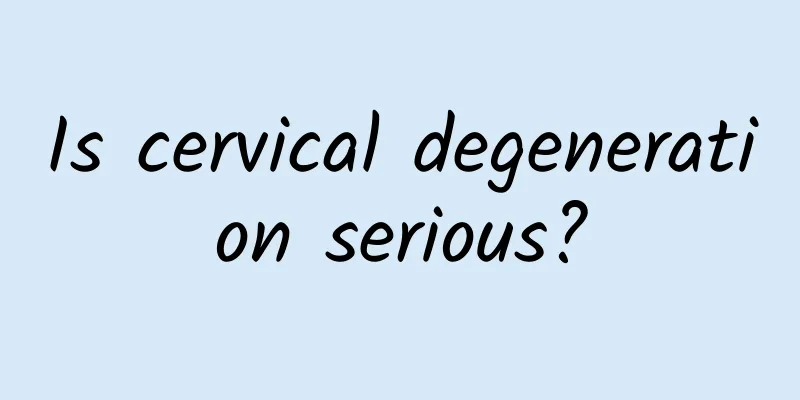What are the causes and treatments for deafness in infants and young children?

|
Deafness is a common ear disease. Deafness causes patients to close a door to the world. So what causes deafness in children? How to treat it? 1. Syndromic deafness: Common syndromic deafness in clinical practice includes large vestibular aqueduct syndrome, Usher syndrome, Alström syndrome, and Waardenburg syndrome mentioned in the previous case. These children often show a group of clinical manifestations in different organs of the body, including deafness. Taking Waardenburg syndrome as an example, Waardenburg syndrome (WS) is one of the common clinical diseases that cause syndromic deafness. It is inherited in an autosomal dominant manner. At least 2% of congenital deafness is caused by Waardenburg syndrome. The pathogenesis of this disease is a syndrome caused by abnormal neural crest cell function due to the loss of melanocytes originating from the neural crest. The main manifestations of Waardenburg syndrome are sensorineural hearing loss and pigmentary abnormalities, the latter including heterochromia iris, white forehead hair, premature graying of hair, skin hypopigmentation or freckles; other manifestations include ectopic epicanthus, high and wide nasal root, hypertrichosis, straight eyebrows or flushing in the middle of eyebrows. Coping strategies: Most diseases are hereditary, and deafness often manifests as bilateral severe sensorineural hearing loss. Treatment can be achieved by choosing hearing aids or cochlear implants depending on the degree of deafness and achieving certain results. 2. Drug poisoning: Some studies have shown that ototoxic drugs have become one of the main causes of hearing loss in children. Deafness-causing drugs mainly include aminoglycosides, salicylates, anti-tumor drugs, and alcohol. Common ones include streptomycin, dihydrostreptomycin, neomycin, kanamycin, gentamicin, vancomycin, puromycin, tobramycin, paromomycin, polymyxin B, quinine, aspirin, etc. In addition, some anti-tumor drugs and diuretics can also damage the auditory nerve and cause hearing impairment. Countermeasures: Mothers should avoid taking certain drugs that may damage the fetus' inner ear during pregnancy (especially within 3 months of pregnancy). Such as streptomycin. When ototoxic drugs must be used, close observation is required. Pay special attention to whether there are phenomena such as tinnitus and dizziness. Detect early and take measures early. 3. Deafness caused by the physiological structure of infants' ears: When infants have a cold, are sucking milk in a supine position, or are nauseous or vomiting, they often develop bacterial infection in the middle ear cavity and acute suppurative otitis media. When the pus in the middle ear cavity continues to increase, the child will cry because of the worsening ear pain. The pressure caused by the increased pus in the middle ear cavity can also cause perforation and rupture of the eardrum. If medical treatment is not sought promptly or the treatment is not thorough, it will cause chronic suppurative otitis media, resulting in continuous damage to the eardrum. As the perforation gets bigger, the impact on hearing will become more serious. Coping strategies: Acute otitis media is an acute suppurative inflammation of the middle ear mucosa. After a cold, inflammation of the pharynx and nose spreads to the Eustachian tube, and pathogenic bacteria take advantage of the opportunity to invade the middle ear, causing otitis media. Common pathogens are mainly pneumococcus, Haemophilus influenzae, etc. Therefore, preventing colds can reduce the incidence of otitis media. Blowing your nose incorrectly can also lead to otitis media. Some people often pinch the nostrils on both sides with two fingers when blowing their nose. Blow your nose hard. This method of blowing your nose not only fails to completely blow out the mucus, but is also very dangerous. The snot contains a large number of viruses and bacteria if both nostrils are pinched. The pressure forces the mucus to squeeze out of the posterior nasal opening, where it reaches the Eustachian tube and causes otitis media. The correct way to blow your nose. Press one nostril with your fingers, blow out the mucus from the opposite nostril with a little force, and then blow the other nostril in the same way. 4. Noise: Compared with adults, children are more vulnerable to noise harm. And their hearing will gradually decrease without any pain. This is because high-decibel noise over-stimulates the weak but very sophisticated "sensory receivers" in children's inner ears. Once the "receivers" are damaged, they can no longer transmit sound to the brain. Coping strategies: Avoid exposing children to noisy environments for long periods of time and avoid common noise pollution sources in life, such as television or high-volume stereos. 5. Periauricular lesions: Lesions of the adjacent organs around the ear may sometimes involve the middle ear cavity, causing hearing loss. Such as rhinitis, sinusitis, tonsillitis, adenoids hypertrophy, etc. Adenoids hypertrophy is an extremely important factor in the etiology of conductive hearing loss in children. The adenoids undergo pathological hyperplasia due to repeated inflammatory stimulation, which can block and compress the lateral pharyngeal opening of the Eustachian tube, causing secretory otitis media, conductive deafness and tinnitus, and leading to hearing loss in children. If otitis media is not treated promptly or lasts too long, hearing may not return to normal even if the adenoids are removed. Therefore, once adenoids hypertrophy in children affects the overall health or adjacent organs, it deserves attention. Coping strategy: When such diseases are discovered, parents should take their children to the hospital for timely treatment and never take it lightly. 6. Ear trauma: Causes include: when children are naughty, some parents slap them in anger; during festive occasions, firecrackers suddenly explode next to children's ears, and the huge air waves rush directly to the eardrum in the ear canal; when swimming, one side of the child's ear hits the water surface first. The above injuries will cause rupture and perforation of the eardrum, directly leading to hearing loss. Coping strategy: Do not pull or hit the ears. You should not put beans, small balls or other similar objects into your ears. When setting off firecrackers during festivals. Parents should ask their children to stand further away. To prevent the explosion from damaging the child's eardrum. 7. Viral infection: Mumps complicated by sensorineural hearing loss mostly occurs in preschool and school-age children and is one of the common causes of unilateral sensorineural hearing loss in children. Hearing tests showed that children with mumps-induced deafness most often had extremely severe or complete deafness in one ear, followed by partial hearing loss in one ear, and bilateral deafness was rare. The typical clinical manifestation is hearing loss about 4 to 5 days after the onset of mumps, which may be accompanied by dizziness and tinnitus. Response strategy: Children with mumps complicated by sensorineural hearing loss should follow the principle of early comprehensive treatment. Treatment measures include antiviral, improving inner ear microcirculation, nerve nutrition, hyperbaric oxygen, etc. 8. Congenital ear malformations: including congenital malformations of the auricle, external auditory canal, middle ear, and inner ear, which can cause conductive deafness and sensorineural deafness to varying degrees. Inner ear malformation is one of the common causes of congenital sensorineural hearing loss in children. Inner ear malformations include bony malformations, membranous malformations, and abnormalities at the cellular level. |
<<: Tumor is actually a genetic disease! How to prevent malignant tumors?
>>: What are the causes of tinnitus and hearing loss?
Recommend
What are the symptoms of gallstones? These are common manifestations
Many people have gallstones, but some do not show...
The labia majora cannot cover the labia minora
The female labia is a relatively important organ....
Is it still possible to have sex after menopause?
I believe that all women do not want to face meno...
Is it better to soak your feet and sweat slightly?
As people continue to pay more attention to healt...
What is the cause of weak kidney pulse?
As we all know, kidneys are one of the most impor...
The benefits of clapping
When people participate in some activities or wat...
The best way to get breast enlargement
When a lump can be felt in the breast from the su...
Is it possible that my mother has acne?
Acne in mothers is usually not hereditary and is ...
The dangers of scapula blockage
The harm caused by blockage of the scapula joint ...
A complete guide to yam soup recipes. Which ones do you know?
The saponins, glycoproteins, tannins, arrestins, ...
Sanyinjiao: An acupuncture point that affects women’s lives!
In fact, Sanyinjiao point is the huge legacy left...
What to do if you have intermittent snoring?
In real life, snoring is a common symptom. It ref...
What medicine should I take for gastroptosis?
Modern people bring many diseases to their bodies...
The glans becomes hard and red
There are some physical discomforts between men an...
The efficacy and function of Lingzhi Beiqi water
When it comes to wild Ganoderma lucidum, everyone...









